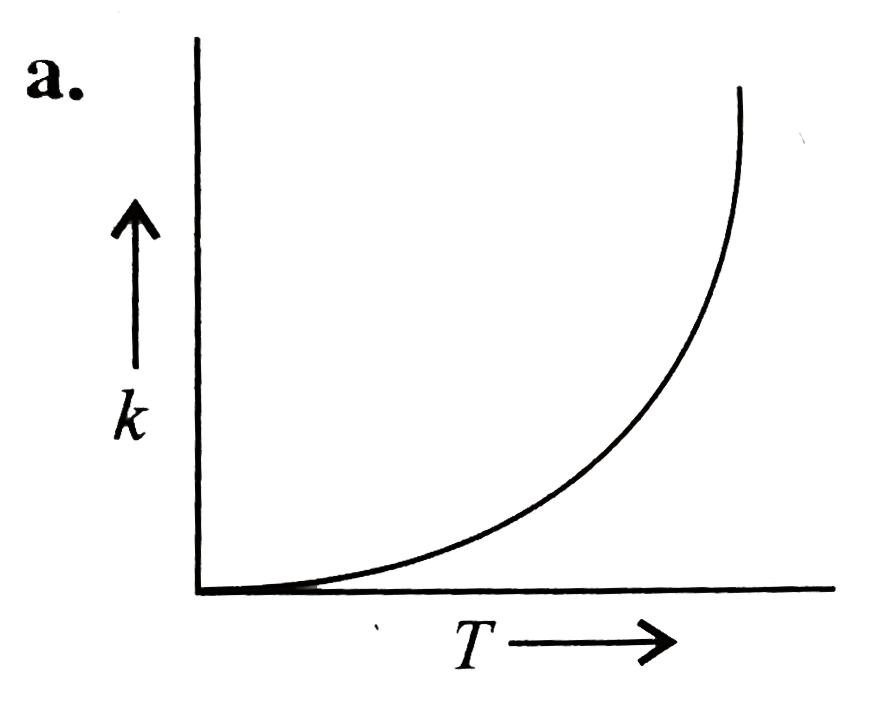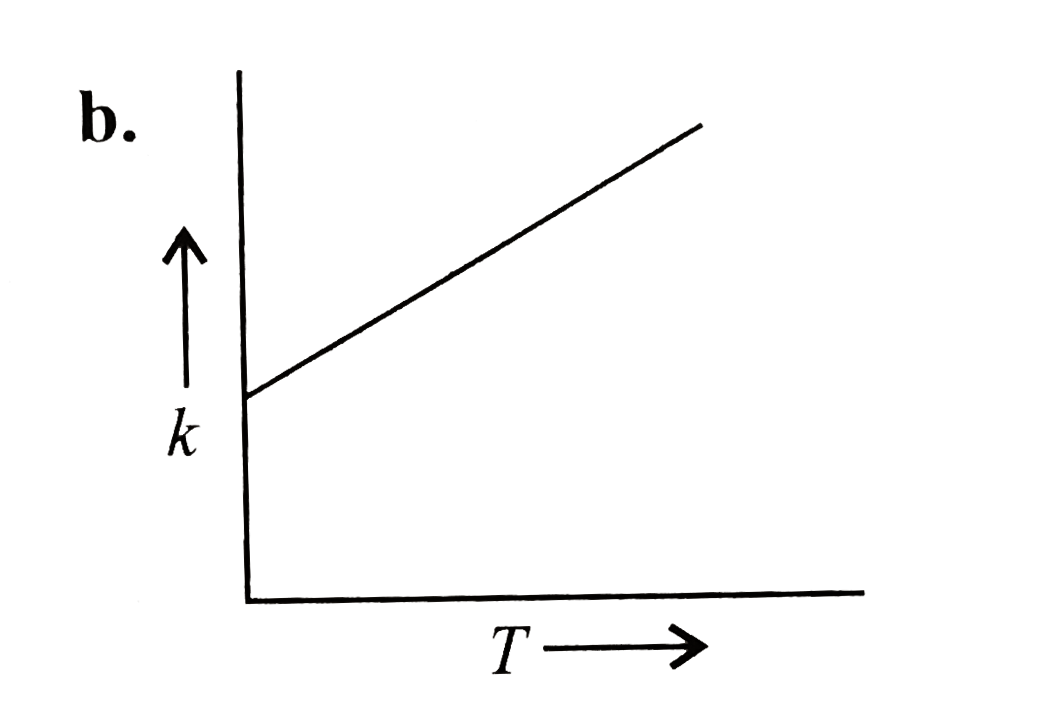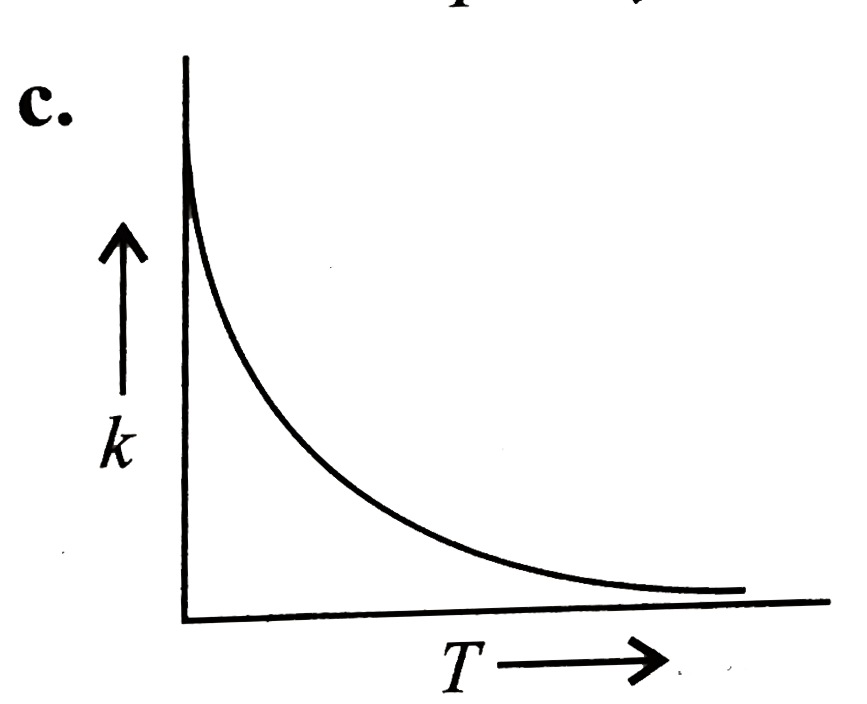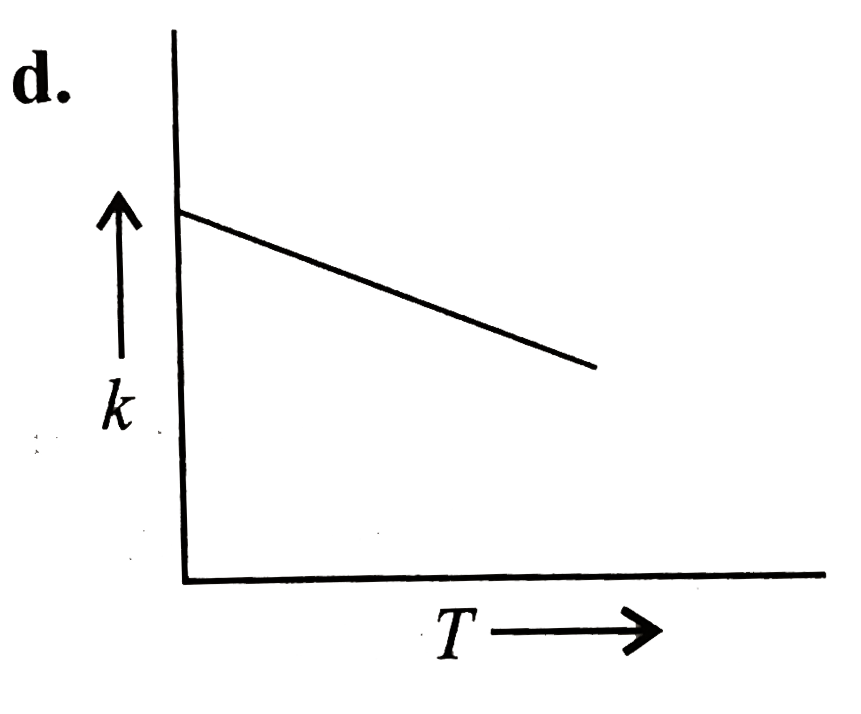The variation of rate constant with temperature forllow sthe equations ln k=30−40T+20T2−30lnT based on the this information, indetify the most appropriate option.
EA at 300 K is approximately equal to 1.08×109R.
EA will remain constant at all temperature
There is some temperature greater than 50 K where EA will becomes negative
Rate constant will follows Arrhenius equations.
The correct Answer is:A
Topper's Solved these Questions
- CHEMICAL KINETICSBOOK - GRB PUBLICATIONCHAPTER - CHEMICAL KINETICSEXERCISE - Mechanism of Reactions
45 Videos
- CHEMICAL KINETICSBOOK - GRB PUBLICATIONCHAPTER - CHEMICAL KINETICSEXERCISE - compllcatio in first order reactions
17 Videos
- CHEMICAL KINETICSBOOK - GRB PUBLICATIONCHAPTER - CHEMICAL KINETICSEXERCISE - E. Methods to Monitor the Progress of Reaction
43 Videos
- CHEMICAL BONDING-IBOOK - GRB PUBLICATIONCHAPTER - CHEMICAL BONDING-IEXERCISE - Subjective Type
120 Videos
- COORDINATION COMPOUNDSBOOK - GRB PUBLICATIONCHAPTER - COORDINATION COMPOUNDSEXERCISE - SBJECTIVE TYPE
98 Videos
Similar Questions
For a certain reaction the variation of rate constant with temperature is given by the equation
lnkt=lnk0+(ln3)t10(t≥0∘C)
The value of temperature coefficient of the reaction is
View SolutionFor a certain reaction the variation of rate constant with temperature is given by the equation
lnkt=lnk0+(ln3)t10(t≥0∘C)
The value of temperature coefficient of the reaction is
View Solution
Knowledge Check
For a certain reaction the variation of rate constant with temperature is given by the equation
lnkt=lnk0+(ln3)t10(t≥0∘C)
The value of temperature coefficient of the reaction isA0.1B1C10D3For an elementary reaction the variation of rate constant (k) with temperature is given by the following equation
log10k=5.4−100T
Where, T is temperature on Kelvin scal and k is in terms of sec−1
Identify the incorrect options.AThere is no finite temperature at which rate constant can be 4×106sec−1BFraction of activated for the reactions will be any temperatureCActivation energy for the reaction will be approx 460.6 cal.DRate of reaction will vary linearly with concentration of reactant.Plots showing the variation of the rate constant (k) with temperature (T) are given below. The plot that follows the Arrhenius equation is
A B
B C
C D
D
Plots showing the variation of the rate constant (k) with temperature (T) are given below. The plot that follows the Arrhenius equation is
View SolutionThe variation of rate constant with temperature is given by the integrated from of the Arrhenius equation, log10k=−Ea2.303RT + constant
where k = rate cosntant and Ea is the experimental activation energy. If for a certain reaction, log10k=−3163.0T+11.899, calculate Ea.
View SolutionThe variation of rate constant with temperature is given by the integrated from of the Arrhenius equation, log10k=−Ea2.303RT + constant
where k = rate cosntant and Ea is the experimental activation energy. If for a certain reaction, log10k=−3163.0T+11.899, calculate Ea.
View SolutionThe variation of rate constant with temperature can be explained by Arrhenius equation. However , the can be explained by Activation energy is found to be temperature dependent/In such casesdinKdT=EaRT2 should be used to predict variation of rate constant with tempreature. On the basic of this information , answer the question that follow :
If for a reaction in K=20−20T+3 in T then Ea at 300 K will be
View SolutionIn order to analyse variation of rate constant with temperature Arrhenius equation is used the two parameters involved pre-exponential factor and activation energy are assumed to be constant in the theory while in reality they may vary with temperature It is further observed that Arrhenius factor is proportional to √T and hence the equation can be restated as: k=A√Te−Ea/RT (where A' is temperature independent). However, for most of the analysis its variation is neglected Also, if activation energy is temperature dependent then Arrhenius equation does not hold true and the following equation should be used
dlnkdT=EaRT2
where symbols have usual meaning.
Assuming Arrhenius factor to be constant and activation energy to be dependent on temperature and varying as (0.02T2) cal (if T is in Kelvin scale) then calculate by what factor will rate constant increase if temperature is increased from 200 K to 400 K?
View Solution
